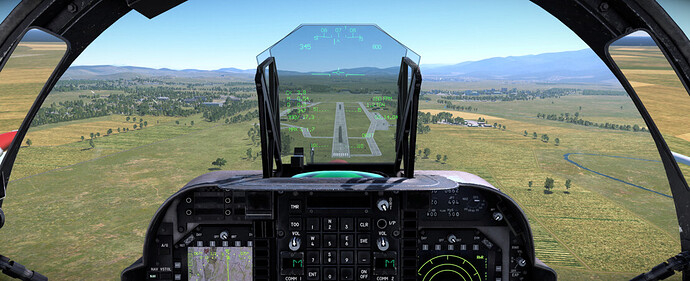Today we take the Harrier airborne! In this mission we perform a conventional takeoff and go to the practice area for some basic maneuvers.
As usual, the mission is chock full of great information provided in non-stop fashion. The UFC is obviously the heart of the airplane as so much of what you want to do is entered through the number pad. Here we are following instructions on setting up the TACAN…
After four or five minutes of checks and setting different systems, we are ready to taxi…
With the anti-skid switch on, nosewheel steering is accomplished by pressing a button on the stick to engage NWS. The Harrier certainly has a very cool ramp presence - as odd as it sounds, the plane looks like the aviation equivalent of a Marine…
Conventional, lightweight takeoff happens at around 130 knots and off we go. I find myself struggling to hold the pitch high enough after the gear retraction to hold the recommended airspeed in the climb…probably due to the light weight.
Turning toward the practice area…
Once at the practice area the instructor walks us through a bunch of maneuvers with recommended airspeeds and configurations for different situations. Economy drills are probably pretty important for conserving fuel for the shipborne vertical landing missions.
We do some steep turns in various flap configurations, as well as some high alpha maneuvers towards stalls and gentle maneuvers in the STOL configuration. Aircraft response feels great…very touchy but it feels great to feel like you are flying an airplane instead of managing it. Fun stuff.
Maneuver profiles and checklists are provided on multiple kneeboard pages…
The lesson ends airborne with the next lesson to cover landing before we move on to STOL/VTOL subject matter. As usual, an awesome mission by @Baltic_Dragon that adds tremendous value to a module. All developers should take note!















































